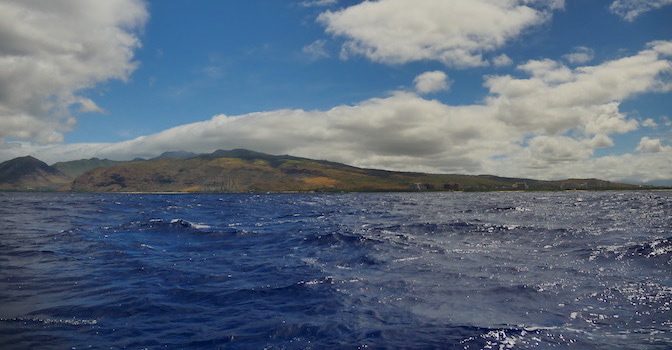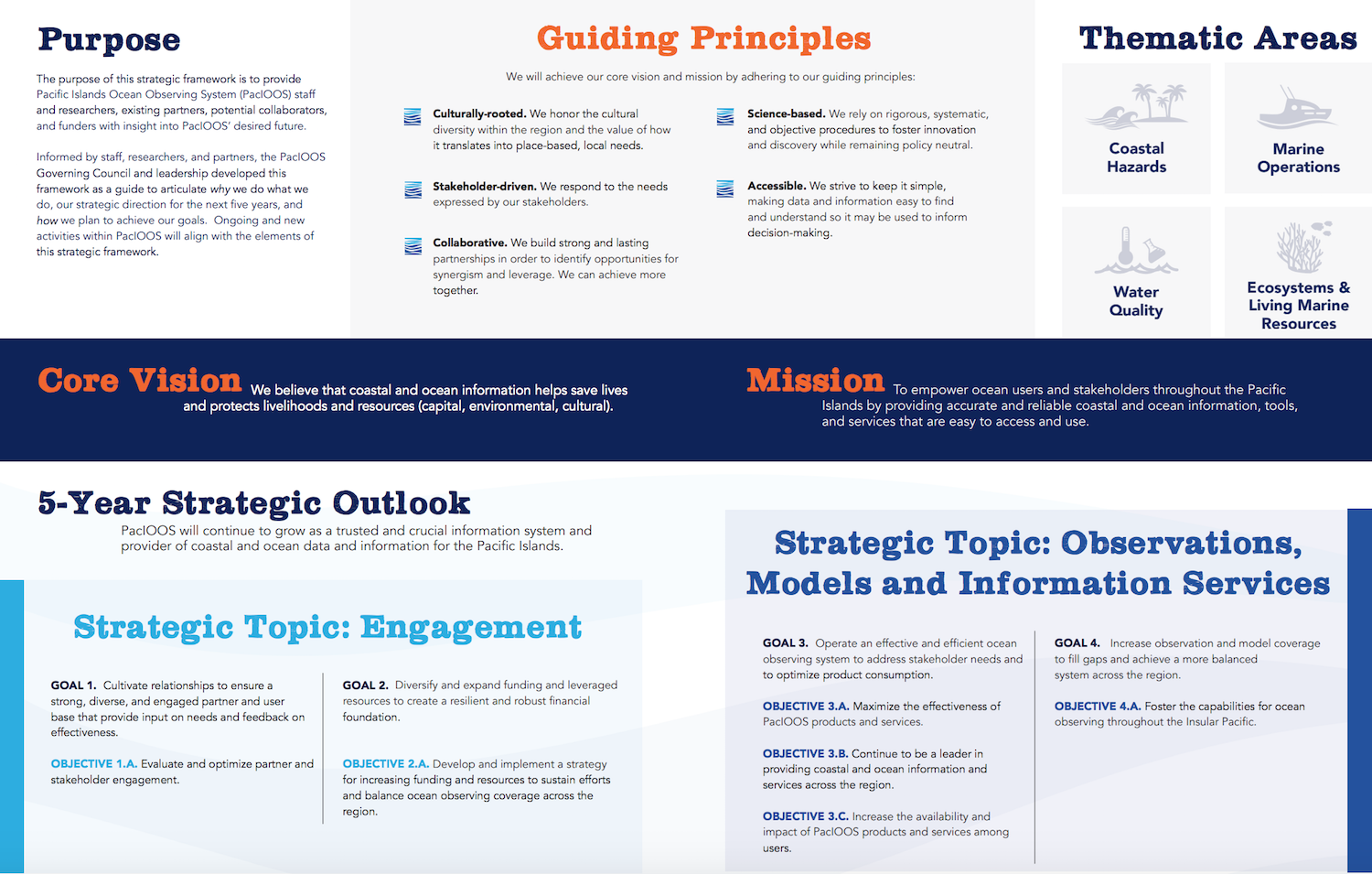PacIOOS 5-Year Strategic Framework

PacIOOS 5-Year Strategic Framework
Posted January 18, 2018The Governing Council has approved the new PacIOOS 5-year Strategic Framework. The document will provide PacIOOS staff, researchers, existing partners, potential collaborators, and funders with insight into PacIOOS’ desired future, and the strategic direction for the next five years (2018-2022). Over the past two years, PacIOOS leadership collected input from Governing Council members, PacIOOS researchers and staff, and MOA partners to develop this guiding document. The framework includes PacIOOS’ core vision and mission, guiding principles, thematic areas, as well as the 5-year strategic outlook, strategic topics, goals, and objectives.

Download the 5-Year Strategic Framework and view other PacIOOS Governance Documents.
On a national level, the U.S. Integrated Ocean Observing System (IOOS) released the U.S. IOOS Enterprise Strategic Plan (2018-22), which lays out Enterprise-wide objectives and priorities for the next five years and into the future. This plan is the first written that addresses the full scope of the U.S. IOOS Enterprise, bringing together the needs and goals of the entire ocean, coastal, and Great Lakes observing system, which is comprised of federal, regional, and international partners in both the public and private sectors. It focuses on cross-cutting goals and practical objectives to address IOOS core capabilities which include: sustained observations; data management and communication; modeling and analysis; user-driven products and tools; and stakeholder engagement, outreach, and education.







